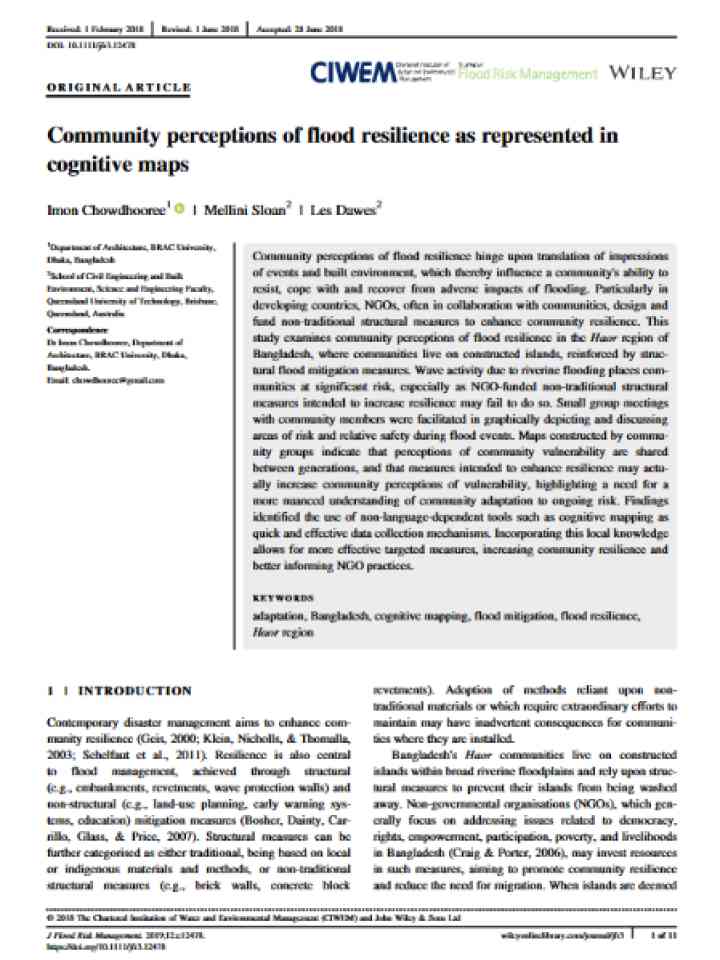Community perceptions of flood resilience as represented in cognitive maps
This study examines community perceptions of flood resilience in the Haor region of Bangladesh, where communities live on constructed islands, reinforced by structural flood mitigation measures. Wave activity due to riverine flooding places communities at significant risk, especially as NGO-funded non-traditional structural measures intended to increase resilience may fail to do so. Small group meetings with community members were facilitated in graphically depicting and discussing areas of risk and relative safety during flood events.
Maps constructed by community groups indicate that perceptions of community vulnerability are shared between generations, and that measures intended to enhance resilience may actually increase community perceptions of vulnerability, highlighting a need for a more nuanced understanding of community adaptation to ongoing risk. Findings identified the use of non-language-dependent tools such as cognitive mapping as quick and effective data collection mechanisms. Incorporating this local knowledge allows for more effective targeted measures, increasing community resilience and better informing NGO practices.
Explore further

